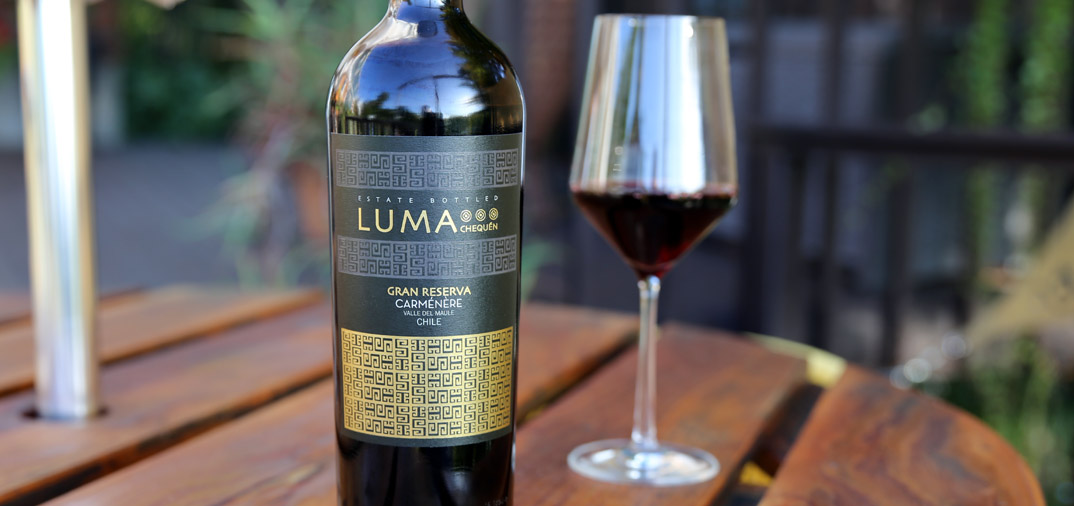 4.5
4.5 Luma Chequén Gran Reserva Carménère
Let me begin by saying, “I was wrong about Carménère.” This is not the first time I’ve had to admit being wrong and it won’t be the last. But fortunately, I’m willing to own up to it when I’m wrong and change my thinking… which, in my humble opinion, is more important than being right all the time.
“What,” you might ask, “am I talking about?” I’m talking about pyrazines.
You might then ask, “what are pyrazines?” Pyrazines are an organic compound found is some wine which gives a green aroma, often described as green pepper. You have likely come across this characteristic most often in Sauvignon Blanc, which is known to have green/grassy aromas. Those aromas come from pyrazines.
You’re likely still wondering what I was wrong about, so let me explain. Carménère is one of the grape varieties known for having pyrazines. Those pyrazines are less prominent when the grapes are well ripened, some say over ripened. While I can appreciate some green characteristics in wine, I often avoid Carménère for fear that the grapes may have been under ripe when harvested, resulting in strong pyrazine qualities in the wine. But my mistake was that I was thinking about it in binary terms — pyrazines in Carménère are bad, period. That was wrong.
A New Approach to Carménère
The Chilean wine PR folks reached out to me recently about tasting some wines made from Carménère. Their pitch was that winemakers are no longer avoiding pyrazines, but are embracing them. My gut reaction was to assume these wines were going to be no good. I went into this tasting with a negative bias, but I was willing to give the wines a fair shot. They proved me wrong.
For years, many winemakers in Chile have tried to suppress pyrazine characteristics in Carménère. But a new generation of winemakers is approaching Carménère with a fresh perspective. They view pyrazines as an authentic characteristic of the wine and are trying to work with them to create spice aromas and flavors that distinguish Carménère from other varieties. It’s about expressing the nature of the grape and the terroir. And it’s about finding the right balance to display those characteristics in the wine without allowing them to overpower other qualities.
Luma Chequén Gran Reserva Carménère
In the coming weeks, I will be posting reviews of a few different wines that reflect this new approach, the first is from Luma Chequén. You might say this wine is like dipping your toe in the water to embracing pyrazines in Carménère. It has a little bit of the old style (i.e., very ripe grapes with suppressed pyrazines) and a little bit of the new style. They achieved this by blending grapes from two different vineyards.

The two different vineyards are both in the Maule Valley wine region of Chile. Both vineyards are in the coastal mountain range and have granite-based soils. The Luma Chequén Batuco Vineyard is closer to the Pacific Ocean, making the climate cooler in this vineyard. A cooler climate means slower ripening of the grapes and more pronounced pyrazine qualities. The other vineyard, Luma Chequén Las Tizas’s Vineyard, is further north and further inland where the climate is warmer. The grapes from Las Tizas’s Vineyard display more dark fruit characteristics and less pyrazines as a result of the warm climate.
Tasting Notes
The nose is really complex, offering aromas like black cherry, blackberry, cocoa, green pepper and cedar. On the palate this wine is plush and delivers rich black cherry and blackberry flavors up front with green pepper, black pepper and baking spices coming into the mid-palate and finish. The acidity is sufficient to give a freshness and brightness to the wine. It has a nice mouthfeel too. It finishes medium long, with dark berry and spice flavors.
Wine: Luma Chequén Gran Reserva Carménère
Varieties: 100% Carménère
Vintage: 2020
Alcohol: 13.9%
Rating: 90
Average price: $17
Disclosure: This wine was received as a media sample.











It is time to bring the Carmenere here . Import from Chile + Later , start local productions
I would buy it
For years and years ,even chileans could not make a big difference between Carmenere and Merlot ……Now they do !
Here being Australia in your case? Agreed, Christian! Thanks for sharing your thoughts!